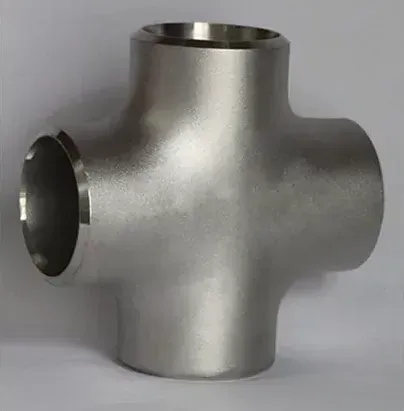-
Cangzhou Yulong Steel Co., Ltd.
-
Phone:
+86 13303177267 -
Email:
admin@ylsteelfittings.com
- English
- Arabic
- Italian
- Spanish
- Portuguese
- German
- kazakh
- Persian
- Greek
- French
- Russian
- Polish
- Thai
- Indonesian
- Vietnamese
- Zulu
- Korean
- Uzbek
- Hindi
- Serbian
- Malay
- Ukrainian
- Gujarati
- Haitian Creole
- hausa
- hawaiian
- Hebrew
- Miao
- Hungarian
- Icelandic
- igbo
- irish
- Japanese
- Javanese
- Kannada
- Khmer
- Rwandese
- Afrikaans
- Albanian
- Amharic
- Armenian
- Azerbaijani
- Basque
- Belarusian
- Bengali
- Bosnian
- Bulgarian
- Catalan
- Cebuano
- China
- China (Taiwan)
- Corsican
- Croatian
- Czech
- Danish
- Esperanto
- Estonian
- Finnish
- Frisian
- Galician
- Georgian
- Kurdish
- Kyrgyz
- Lao
- Latin
- Latvian
- Lithuanian
- Luxembourgish
- Macedonian
- Malgashi
- Malayalam
- Maltese
- Maori
- Marathi
- Mongolian
- Myanmar
- Nepali
- Norwegian
- Norwegian
- Occitan
- Pashto
- Dutch
- Punjabi
- Romanian
- Samoan
- Scottish Gaelic
- Sesotho
- Shona
- Sindhi
- Sinhala
- Slovak
- Slovenian
- Somali
- Sundanese
- Swahili
- Swedish
- Tagalog
- Tajik
- Tamil
- Tatar
- Telugu
- Turkish
- Turkmen
- Urdu
- Uighur
- Welsh
- Bantu
- Yiddish
- Yoruba

Nov . 11, 2024 14:51 Back to list
hydraulic pipe welding
Hydraulic Pipe Welding Techniques and Considerations
Hydraulic systems are integral to a wide array of industrial applications, from heavy machinery to automotive systems. At the heart of these systems lies the hydraulic pipe, essential for transporting high-pressure fluids with precision and reliability. Therefore, the welding of hydraulic pipes is a critical process that ensures both the effectiveness and safety of hydraulic systems. In this article, we will explore the techniques and considerations involved in hydraulic pipe welding.
Understanding Hydraulic Pipes
Hydraulic pipes are typically made from materials that can withstand high pressure and resist corrosion, such as carbon steel, stainless steel, and various alloys. These materials are chosen based on the specific requirements of the hydraulic system. Proper welding of these pipes is crucial not only for maintaining the integrity of the connections but also for ensuring that the hydraulic system operates efficiently without leaks.
Welding Techniques
There are several techniques commonly used in hydraulic pipe welding, including
1. MIG Welding (Metal Inert Gas) This method uses a continuous wire feed and an inert gas to protect the weld pool from contamination. MIG welding is favored for its speed and ease of use, making it suitable for welding thin-walled hydraulic pipes.
2. TIG Welding (Tungsten Inert Gas) TIG welding is known for producing high-quality welds with strong aesthetic appeal. This technique utilizes a non-consumable tungsten electrode to produce the weld and is often used for thicker materials or more complex welds that require precision.
3. Stick Welding (SMAW - Shielded Metal Arc Welding) This traditional technique involves using a consumable electrode coated in flux. Stick welding is less common for hydraulic pipes due to the higher likelihood of slag inclusion, but it can be utilized in outdoor or windy conditions where other methods may struggle.
4. Orbital Welding This is a specialized technique primarily used for piping systems that require absolute integrity and precision, such as in pharmaceutical or semiconductor applications. Orbital welding allows for a highly controlled environment and consistency, resulting in high-quality joints.
Preparation and Process Control
hydraulic pipe welding

Before the welding process begins, proper preparation is essential. The pipes must be cleaned thoroughly to remove any contaminants such as oil, dirt, and rust. Poorly prepared surfaces can lead to weak welds and potential failures in the hydraulic system.
Ensuring the correct alignment of the pipes is also crucial. Misalignment can cause stress on the weld and lead to leaks or breakage over time. The use of jigs or fixtures can assist with maintaining proper alignment throughout the welding process.
Post-Welding Considerations
After welding, several post-welding processes need to be considered. These include
1. Inspection Visual inspection should be conducted to identify any obvious defects such as cracks, inclusions, or incomplete fusion. Further non-destructive testing methods, like ultrasonic or radiographic testing, may also be employed to ensure the integrity of the weld joint.
2. Heat Treatment Depending on the materials used and the specific application, post-weld heat treatment might be necessary to relieve any residual stresses and improve the mechanical properties of the joints.
3. Surface Finishing In certain applications, particularly those exposed to corrosive environments, a protective coating may be applied to prevent rust and degradation of the welded joints.
Safety Considerations
In any welding environment, safety is paramount. Welders should be equipped with personal protective equipment (PPE) including helmets, gloves, and protective clothing to safeguard against burns and exposure to harmful fumes. Adequate ventilation is essential, especially when welding materials that may emit harmful gases.
Conclusion
Welding hydraulic pipes is a multifaceted process that demands a high level of skill and attention to detail. By understanding the various welding techniques and adhering to best practices in preparation, execution, and post-welding processes, welders can ensure the integrity and reliability of hydraulic systems. As technology advances and new materials emerge, continuous education and adaptation will be vital to keep pace with the evolving demands of hydraulic pipe welding.
Latest news
-
ANSI 150P SS304 SO FLANGE
NewsFeb.14,2025
-
ASTM A333GR6 STEEL PIPE
NewsJan.20,2025
-
ANSI B16.5 WELDING NECK FLANGE
NewsJan.15,2026
-
ANSI B16.5 SLIP-ON FLANGE
NewsApr.19,2024
-
SABS 1123 FLANGE
NewsJan.15,2025
-
DIN86044 PLATE FLANGE
NewsApr.19,2024
-
DIN2527 BLIND FLANGE
NewsApr.12,2024
-
JIS B2311 Butt-Welding Fittings LR/SR 45°/90° /180°Seamless/Weld
NewsApr.23,2024











